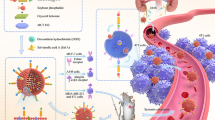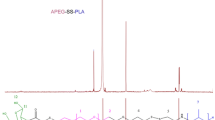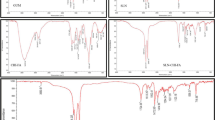Abstract
Resistance to chemotherapeutic drugs is the main limitation of cancer therapy. The combination use of chemotherapeutic agents and galangin (a naturally active flavonoid) amplifies the effectiveness of cancer treatment. This study aimed to prepare arginyl-glycyl-aspartic acid (RGD) containing nanostructured lipid carrier (NLC-RGD) to improve the bioavailability of galangin and explore its ability in improving the cytotoxic effects of doxorubicin (DOX). Galangin-loaded NLC-RGD was prepared by hot homogenization method and characterized by diverse techniques. Then, cytotoxicity, uptake, and apoptosis induction potential of prepared nanoparticles beside the DOX were evaluated on A549 lung cancer cells. Finally, the expression level of some ABC transporter genes was evaluated in galangin-loaded NLC-RGD-treated cells. Nanoparticles with appropriate characteristics of the delivery system (size: 120 nm, polydispersity index: 0.23, spherical morphology, and loading capacity: 59.3 mg/g) were prepared. Uptake experiments revealed that NLC-RGD promotes the accumulation of galangin into cancerous cells by integrin-mediated endocytosis. Results also showed higher cytotoxicity and apoptotic effects of DOX + galangin-loaded NLC-RGD in comparison to DOX + galangin. Gene expression analysis demonstrated that galangin-loaded NLC-RGD downregulates ABCB1, ABCC1, and ABCC2 more efficiently than galangin. These findings indicated that delivery of galangin by NLC-RGD makes it an effective adjuvant to increase the efficacy of chemotherapeutic agents in cancer treatment.





Similar content being viewed by others
Data availability
Data generated during this study are included in the supplementary material.
References
Cao Y, Zhou Y, Zhuang Q, Cui L, Xu X, Xu R, He X (2015) Anti-tumor effect of RGD modified PTX loaded liposome on prostatic cancer. Int J Clin Exp Med 8:12182
Critchfield JW, Welsh CJ, Phang JM, Yeh GC (1994) Modulation of adriamycin® accumulation and efflux by flavonoids in HCT-15 colon cells: activation of P-glycoprotein as a putative mechanism. Biochem Pharmacol 48:1437–1445
Czajkowska-Kośnik A, Szymańska E, Czarnomysy R, Jacyna J, Markuszewski M, Basa A, Winnicka K (2021) Nanostructured lipid carriers engineered as topical delivery of etodolac: optimization and cytotoxicity studies. Materials 14:596
Gwak J, Oh J, Cho M, Bae SK, Song I-S, Liu K-H, Jeong Y, Kim D-E, Chung Y-H, Oh S (2011) Galangin suppresses the proliferation of β-catenin response transcription-positive cancer cells by promoting adenomatous polyposis coli/axin/glycogen synthase kinase-3β-independent β-catenin degradation. Mol Pharmacol 79:1014–1022
Hajipour H, Farzadi L, Roshangar L, Latifi Z, Kahroba H, Shahnazi V, Hamdi K, Ghasemzadeh A, Fattahi A, Nouri M (2021) A human chorionic gonadotropin (hCG) delivery platform using engineered uterine exosomes to improve endometrial receptivity. Life Sci 275:119351
Hajipour H, Ghorbani M, Kahroba H, Mahmoodzadeh F, Emameh RZ, Taheri RA (2019) Arginyl-glycyl-aspartic acid (RGD) containing nanostructured lipid carrier co-loaded with doxorubicin and sildenafil citrate enhanced anti-cancer effects and overcomes drug resistance. Process Biochem 84:172–179
Hajipour H, Hamishehkar H, NazariSoltan Ahmad S, Barghi S, Maroufi NF, Taheri RA (2018) Improved anticancer effects of epigallocatechin gallate using RGD-containing nanostructured lipid carriers. Artif Cells Nanomed Biotechnol 46:283–292
Han MA, Lee DH, Woo SM, Seo BR, Min K-j, Kim S, Park J-W, Kim SH, Choi YH, Kwon TK (2016) Galangin sensitizes TRAIL-induced apoptosis through down-regulation of anti-apoptotic proteins in renal carcinoma Caki cells. Sci Rep 6:1–10
Heikkilä O, Susi P, Stanway G, Hyypiä T (2009) Integrin αVβ6 is a high-affinity receptor for coxsackievirus A9. J Gen Virol 90:197–204
Hufschmid R, Teeman E, Mehdi BL, Krishnan KM, Browning ND (2019) Observing the colloidal stability of iron oxide nanoparticles in situ. Nanoscale 11:13098–13107
Ji X, Lu Y, Tian H, Meng X, Wei M, Cho WC (2019) Chemoresistance mechanisms of breast cancer and their countermeasures. Biomed Pharmacother 114:108800
Kakran M, Sahoo N, Li L (2011) Dissolution enhancement of quercetin through nanofabrication, complexation, and solid dispersion. Colloids Surf B: Biointerfaces 88:121–130
Kang H, Rho S, Stiles WR, Hu S, Baek Y, Hwang DW, Kashiwagi S, Kim MS, Choi HS (2020) Size-dependent EPR effect of polymeric nanoparticles on tumor targeting. Adv Healthcare Mater 9:1901223
Khajavinia A, Varshosaz J, Dehkordi AJ (2012) Targeting etoposide to acute myelogenous leukaemia cells using nanostructured lipid carriers coated with transferrin. Nanotechnology 23:405101
Lane LA, Qian X, Smith AM, Nie S (2015) Physical chemistry of nanomedicine: understanding the complex behaviors of nanoparticles in vivo. Annu Rev Phys Chem 66:521–547
Li Y, Paxton JW (2013) The effects of flavonoids on the ABC transporters: consequences for the pharmacokinetics of substrate drugs. Expert Opin Drug Metab Toxicol 9:267–285
Lin KH, Rutter JC, Xie A, Pardieu B, Winn ET, Dal Bello R, Forget A, Itzykson R, Ahn Y-R, Dai Z (2020) Using antagonistic pleiotropy to design a chemotherapy-induced evolutionary trap to target drug resistance in cancer. Nat Genet 52:408–417
Liu R, Li X, Xiao W, Lam KS (2017) Tumor-targeting peptides from combinatorial libraries. Adv Drug Deliv Rev 110:13–37
Lorendeau D, Dury L, Genoux-Bastide E, Lecerf-Schmidt F, Simões-Pires C, Carrupt P-A, Terreux R, Magnard S, Di Pietro A, Boumendjel A (2014) Collateral sensitivity of resistant MRP1-overexpressing cells to flavonoids and derivatives through GSH efflux. Biochem Pharmacol 90:235–245
Gonçalves BMF, Cardoso DSP, Ferreira M-JU (2020) Overcoming multidrug resistance: flavonoid and terpenoid nitrogen-containing derivatives as ABC transporter modulators. Molecules 25:3364
Muriithi W, Macharia LW, Heming CP, Echevarria JL, Nyachieo A, Niemeyer Filho P, Neto VM (2020) ABC transporters and the hallmarks of cancer: roles in cancer aggressiveness beyond multidrug resistance. Cancer Biol Med 17:253
Nanayakkara AK, Follit CA, Chen G, Williams NS, Vogel PD, Wise JG (2018) Targeted inhibitors of P-glycoprotein increase chemotherapeutic-induced mortality of multidrug resistant tumor cells. Sci Rep 8:1–18
Nieberler M, Reuning U, Reichart F, Notni J, Wester H-J, Schwaiger M, Weinmüller M, Räder A, Steiger K, Kessler H (2017) Exploring the role of RGD-recognizing integrins in cancer. Cancers 9:116
Perla-Lidia P-P, Stephanie-Talia M-M, Mónica-Griselda A-M, Luz-María T-E (2021) ABC transporter superfamily. An updated overview, relevance in cancer multidrug resistance and perspectives with personalized medicine. Mol Biol Rep 48:1883–901
Raj S, Khurana S, Choudhari R, Kesari KK, Kamal MA, Garg N, Ruokolainen J, Das BC, Kumar D (2019) Specific targeting cancer cells with nanoparticles and drug delivery in cancer therapy. Semin Cancer Biol 69:166–177
Ren K, Zhang W, Wu G, Ren J, Lu H, Li Z, Han X (2016) Synergistic anti-cancer effects of galangin and berberine through apoptosis induction and proliferation inhibition in oesophageal carcinoma cells. Biomed Pharmacother 84:1748–1759
Sobot D, Mura S, Couvreur P (2016) How can nanomedicines overcome cellular-based anticancer drug resistance? Journal of Materials Chemistry B 4:5078–5100
Soheilifar MH, Taheri RA, Emameh RZ, Moshtaghian A, Kooshki H, Motie MR (2018) Molecular landscape in alveolar soft part sarcoma: implications for molecular targeted therapy. Biomed Pharmacother 103:889–896
Wen SY, Chen JY, Chen CJ, Huang CY, Kuo WW (2020) Protective effects of galangin against H2O2-induced aging via the IGF-1 signaling pathway in human dermal fibroblasts. Environ Toxicol 35:115–123
Wu B, Kulkarni K, Basu S, Zhang S, Hu M (2011) First-pass metabolism via UDP-glucuronosyltransferase: a barrier to oral bioavailability of phenolics. J Pharm Sci 100:3655–3681
Yoo J, Park C, Yi G, Lee D, Koo H (2019) Active targeting strategies using biological ligands for nanoparticle drug delivery systems. Cancers 11:640
Yu S, Gong L-s, Li N-f, Pan Y-f, Zhang L (2018) Galangin (GG) combined with cisplatin (DDP) to suppress human lung cancer by inhibition of STAT3-regulated NF-κB and Bcl-2/Bax signaling pathways. Biomed Pharmacother 97:213–224
Zhang H-T, Wu J, Wen M, Su L-J, Luo H (2012) Galangin induces apoptosis in hepatocellular carcinoma cells through the caspase 8/t-Bid mitochondrial pathway. J Asian Nat Prod Res 14:626–633
Zhu J, Wang Q, Li H, Zhang H, Zhu Y, Omari-Siaw E, Sun C, Wei Q, Deng W, Yu J (2018) Galangin-loaded, liver targeting liposomes: optimization and hepatoprotective efficacy. Journal of Drug Delivery Science and Technology 46:339–347
Zou W-W, Xu S-P (2018) Galangin inhibits the cell progression and induces cell apoptosis through activating PTEN and Caspase-3 pathways in retinoblastoma. Biomed Pharmacother 97:851–863
Acknowledgements
Thanks to guidance and advice from the “Clinical Research Development Unit of Baqiyatallah Hospital.”
Funding
Project was supported by the Nanobiotechnology Research Center of Baqiyatallah University of Medical Sciences (project number: 98000453, IR.BMSU.REC.1399.202).
Author information
Authors and Affiliations
Contributions
HH, RT, and MG conceived and designed research. HH, MN, and MG conducted experiments. MN and RZE provided setups and reagents/samples. AB and RZE analyzed data. HH and AB wrote the manuscript. MG revised the manuscript. RT supervised the study. All authors read and approved the manuscript, all data were generated in-house, and no paper mill was used.
Corresponding author
Ethics declarations
Ethics approval
Procedure of study was approved by the Ethical Committee of Baqiyatallah University of Medical Sciences (IR.BMSU.REC.1399.202).
Consent to participate
Not applicable.
Consent for publication
Not applicable.
Competing interests
The authors declare no competing interests.
Additional information
Publisher's note
Springer Nature remains neutral with regard to jurisdictional claims in published maps and institutional affiliations.
Supplementary Information
Below is the link to the electronic supplementary material.
Rights and permissions
About this article
Cite this article
Hajipour, H., Nouri, M., Ghorbani, M. et al. Targeted nanostructured lipid carrier containing galangin as a promising adjuvant for improving cytotoxic effects of chemotherapeutic agents. Naunyn-Schmiedeberg's Arch Pharmacol 394, 2353–2362 (2021). https://doi.org/10.1007/s00210-021-02152-9
Received:
Accepted:
Published:
Issue Date:
DOI: https://doi.org/10.1007/s00210-021-02152-9




